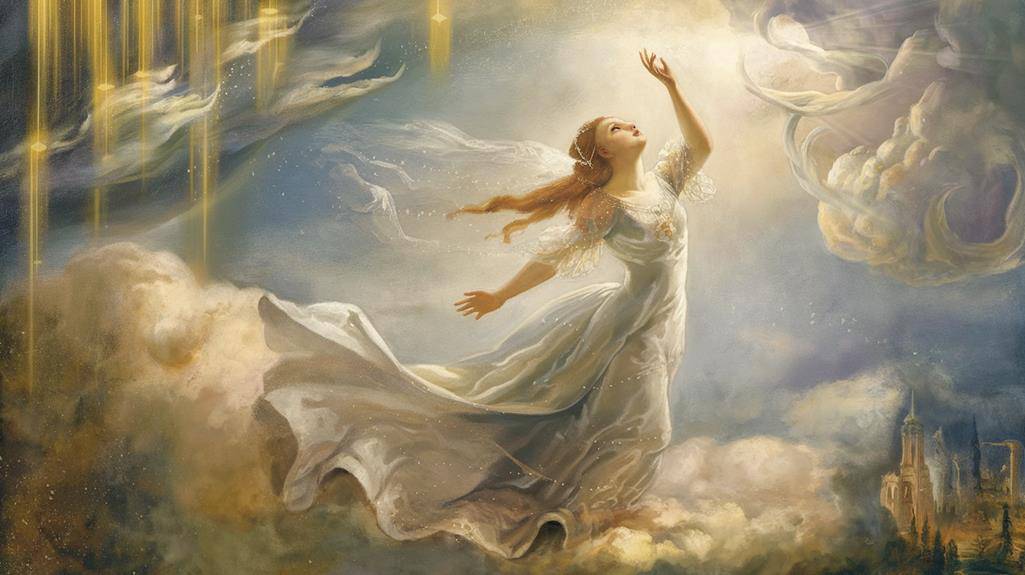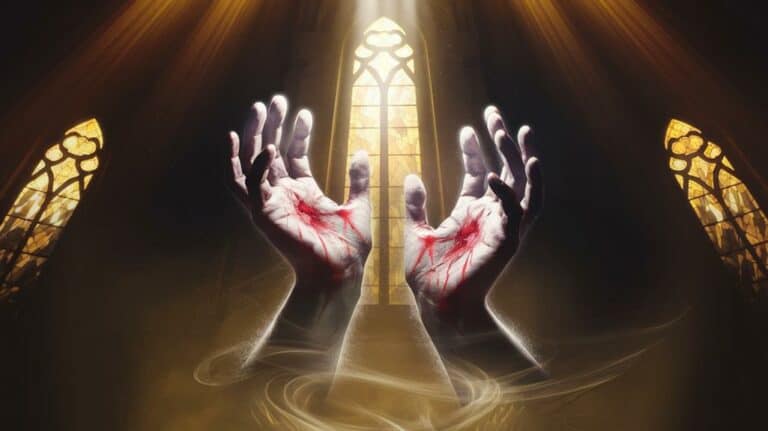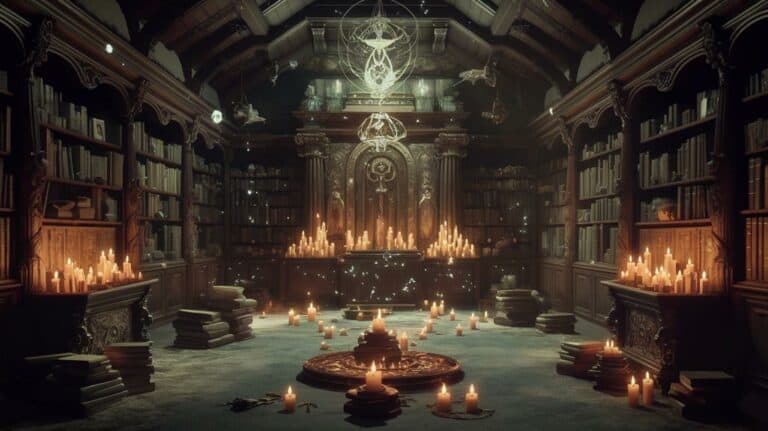What Is Bridal Mysticism?
You’ve probably encountered religious imagery depicting the love between God and humanity, but you may not know about one of Christianity’s most intimate spiritual traditions: bridal mysticism. This profound mystical approach frames the relationship between the divine and the human soul as a passionate romance, complete with courtship, longing, and ultimate union. While this concept might seem unusual to modern sensibilities, it’s deeply rooted in medieval Christian thought and continues to influence spiritual practices today. To understand how this intimate vision of divine love shaped religious experience, let’s explore its fascinating journey from ancient texts to contemporary spirituality.
Origins of Bridal Mysticism
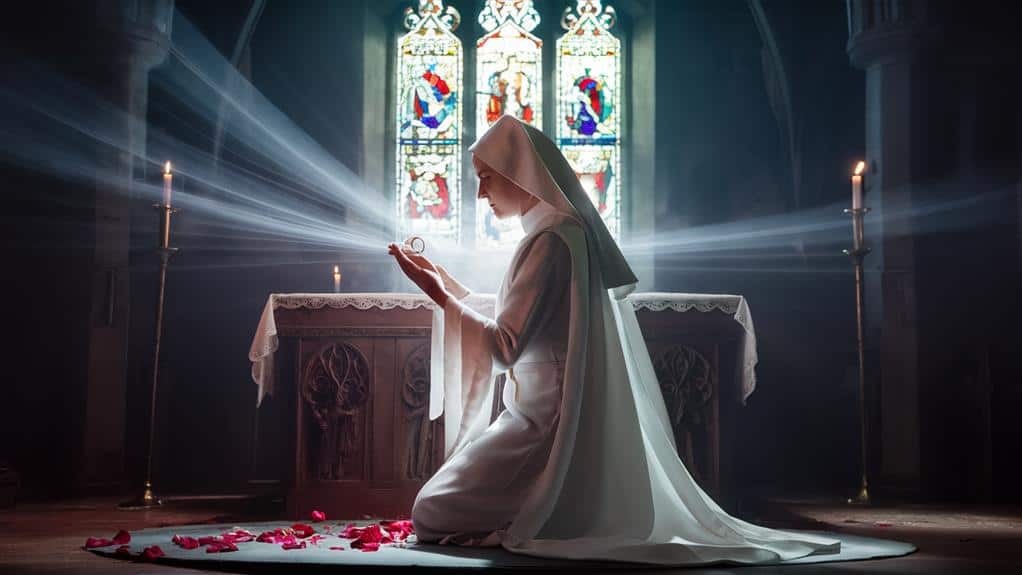
The concept of bridal mysticism emerged during the medieval period when Christian mystics began interpreting the intimate relationship between Christ and the Church through the lens of marriage.
You’ll find its deepest roots in the allegorical interpretations of the Song of Songs, where the soul’s union with the divine takes on profoundly intimate dimensions.
As you explore these origins, you’ll discover how 12th-century figures like Bernard of Clairvaux transformed this spiritual metaphor into a complete theological framework.
They drew upon the rich imagery of courtly love poetry, interweaving it with contemplative practices that emphasized the soul’s yearning for divine union.
You’re inheriting a tradition that flourished particularly among medieval women mystics, who found in bridal mysticism a powerful vehicle for expressing their spiritual experiences.
The metaphor gained momentum through the writings of influential figures like Mechthild of Magdeburg and Gertrude the Great, who weren’t afraid to describe their mystical encounters in boldly passionate terms.
You’re witnessing how they channeled their deepest spiritual longings through the language of romantic love, creating a legacy that continues to influence contemplative spirituality today.
Medieval Mystics and Their Visions
Many medieval mystics experienced profound visions that shaped the development of bridal mysticism, with figures like Hildegard of Bingen and Julian of Norwich recording detailed accounts of their divine encounters.
These women mystics wrote extensively of their intimate spiritual experiences, describing mystical marriages with Christ in vivid, often startling detail. You’ll find in their writings a remarkable blend of the earthly and divine, as they struggled to capture ineffable experiences in human language.
When you explore their accounts, you’ll discover how Mechthild of Magdeburg described her soul’s union with God as a passionate romance, while Catherine of Siena spoke of wearing Christ’s ring, visible only to her.
These mystics didn’t just observe their visions passively – they actively participated in them, engaging in spiritual dialogues that transformed their understanding of divine love.
Their experiences weren’t merely personal revelations; they’ve become foundational texts that continue to influence contemporary spiritual thought.
Through their writings, you’ll encounter a form of spirituality that transcends traditional religious boundaries, offering insights into the profound possibilities of direct, personal encounters with the divine.
Biblical Foundations and Symbolism
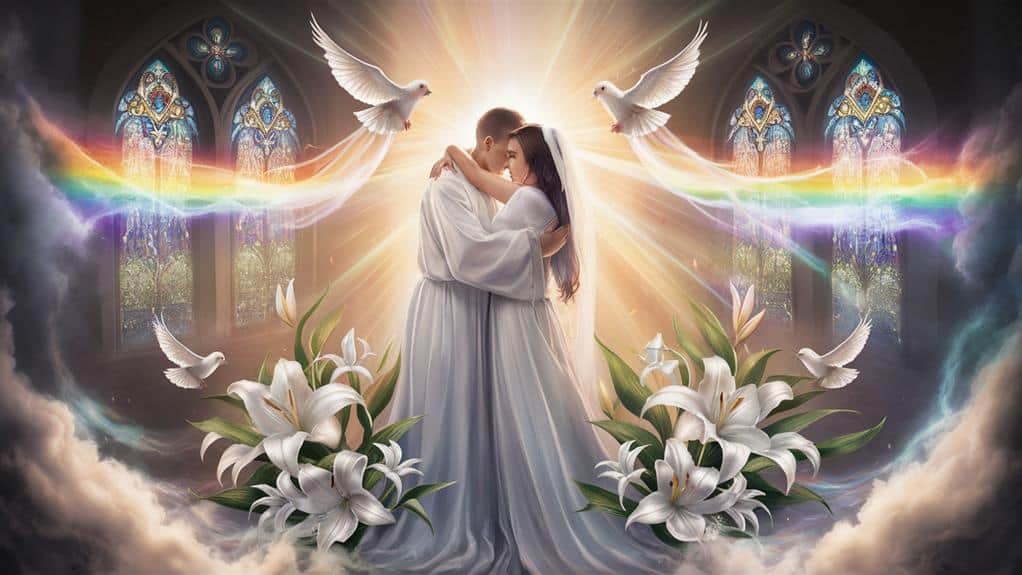
Throughout the Bible, bridal imagery serves as a foundational metaphor for God’s relationship with his people, laying the groundwork for later bridal mysticism. You’ll find this profound symbolism woven throughout Scripture, from the passionate verses of Song of Solomon to the prophetic writings where God portrays himself as a devoted husband to Israel. These sacred writings invite you to contemplate a divine love that transcends ordinary human understanding.
As you explore deeper, you’ll discover how the New Covenant amplifies this matrimonial metaphor, particularly in Paul’s letters where he describes the Church as Christ’s bride. This imagery reaches its climactic expression in Revelation’s depiction of the wedding feast of the Lamb, where you’re presented with the ultimate union between divine and human reality.
The Biblical foundation employs rich symbolic language – the wedding garment, the feast, the bridegroom’s arrival – each element carrying layers of spiritual significance that you can contemplate in your own journey. When you understand these scriptural roots, you’ll see how medieval mystics weren’t creating new concepts but rather drawing from this ancient well of divine-human intimacy established in sacred writings.
Theological Impact Through History
Since medieval times, bridal mysticism has profoundly shaped Christian theology, influencing how believers understand their relationship with God.
You’ll find its deepest expressions in the works of mystics like Bernard of Clairvaux and Teresa of Ávila, who revolutionized the way you might perceive divine intimacy. They’ve shown you how to embrace a more personal, passionate connection with the divine.
As you explore this theological tradition, you’ll discover how it’s transformed conventional religious practices into deeply personal encounters.
Through the centuries, bridal mysticism has offered you a path to experience God’s love not just intellectually, but emotionally and spiritually. You’ll see its impact in contemporary worship styles, spiritual direction, and personal devotional practices. The mystical marriage concept has provided a framework for understanding divine union that transcends mere doctrine.
Today, you’re inheriting a rich legacy that continues to shape modern spirituality.
Whether you’re drawn to contemplative prayer or seeking a more intimate faith journey, bridal mysticism offers you a time-tested approach to experiencing divine love through the metaphor of spiritual marriage.
Modern Spiritual Practice Applications

Contemporary believers have adapted bridal mysticism practices into their daily spiritual routines through meditation, contemplative prayer, and devotional journaling.
You’ll find that setting aside quiet moments to envision yourself as the beloved of the Divine can transform your spiritual journey from mere religious observance into an intimate communion with the Sacred.
In your practice, you might begin by creating a sacred space where you can engage in contemplative reading of mystical texts, allowing their metaphors of divine romance to wash over your consciousness.
Through centering prayer, you’ll discover opportunities to rest in the embrace of Divine love, much as medieval mystics experienced their spiritual unions.
You can enhance these moments by keeping a spiritual journal, recording your experiences of God’s presence as you’d document the unfolding of a profound relationship.
As you integrate these elements into your spiritual life, you’ll notice how the ancient wisdom of bridal mysticism adapts naturally to contemporary needs, offering you a deeply personal path to transcendence while maintaining a connection to a time-honoured tradition of spiritual intimacy.
Conclusion
As you contemplate bridal mysticism’s enduring legacy, you’ll find its profound influence resonates in today’s spiritual practices. You’re inheriting a tradition that transforms the divine-human relationship into an intimate, experiential journey. Whether you’re drawn to contemplative prayer or seeking deeper union with the Divine, you’ll discover that this medieval mystical approach continues to offer a compelling framework for understanding your own sacred relationship with God.



